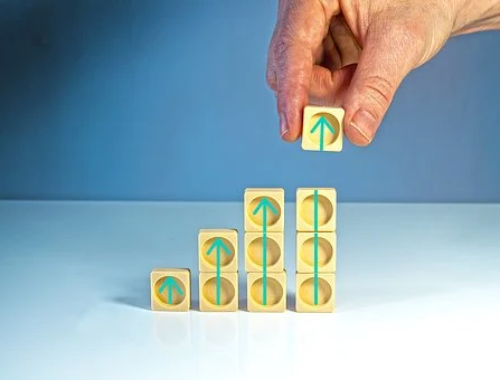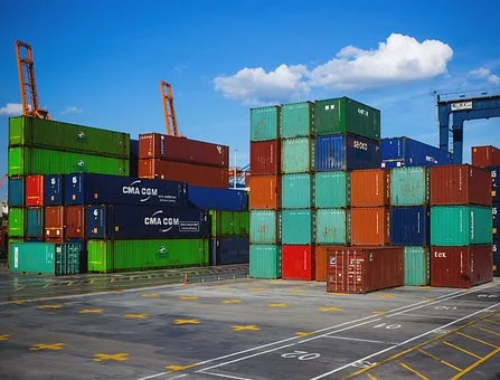Steel, stimulus drive China's strongest economic growth since 2015
Rising inventories and recent falls in steel prices suggest output is growing faster than China's demand, which could heighten trade tensions with the U.S. and other major trading partners.
China's economy grew faster than expected in the first quarter as higher government infrastructure spending and a gravity-defying property boom helped boost industrial output by the most in over two years.
Growth of 6.9 percent was the fastest in six quarters, with forecast-beating March investment, retail sales and exports all suggesting the economy may carry solid momentum into spring.
But most analysts say the first quarter may be as good as it gets for China, and worry Beijing is still relying too heavily on stimulus and "old economy" growth drivers, primarily the steel industry and a property market that is overheating.
"The Chinese government has a tendency to rely on infrastructure development to sustain growth in the long term," economists at ANZ said in a note.
"The question is whether this investment-led model is sustainable as the authorities have trouble taming credit. We need to watch closely whether China’s top leadership will send a stronger signal to tighten monetary policy shortly."
Even as top officials vowed to crack down on debt risks, China's total social financing, a broad measure of credit and liquidity in the economy, reached a record 6.93 trillion yuan ($1 trillion) in the quarter -- roughly equivalent to the size of Mexico's economy.
Spending by the central and local governments rose 21 percent from a year earlier.
That helped goose the pace of growth in the first quarter well above the government's 2017 target of around 6.5 percent, and pipped economists' forecasts of 6.8 percent year-on-year.
Such a strong bolt from the gate could see Beijing once again meet its annual growth target, even if activity starts to fade later in the year, as many analysts widely expect.
"Main indicators were better than expected...which laid a good foundation for achieving the full-year growth goals," statistics spokesman Mao Shengyong said at a news conference.
SAME OLD GROWTH DRIVERS?
Once again, China's policymakers leaned on infrastructure and real estate investment to drive expansion. Growth in both areas has accelerated from last year and helped offset slightly weaker growth in the services sector.
"Faster growth in industrial output is the primary factor in the first quarter surprise, and due mostly to higher value-added growth related to supply-side consolidation in heavy industry," said Brian Jackson, China economist at IHS Global Insight.
Fixed asset investment rose 9.2 percent on-year, trouncing estimates, but IHS believes the growth was due entirely to faster spending in industry and construction.
Real estate investment remained robust, expanding 9.1 percent, while new construction quickened despite intensifying government measures to cool soaring home prices.
Most analysts agree the heated property market poses the single biggest risk to China's growth, but predict the cumulative weight of property curbs will eventually temper activity, not produce an outright crash.
"Sales (growth) has started falling, which means tightening measures are starting to take effect," said Shen Jianguang, an analyst at Mizuho Securities in Hong Kong, China.
More than two dozen cities announced property cooling measures in recent weeks, after curbs late last year appeared to have little lasting effect.
The construction boom has helped fuel the best profits for China's industrial firms in years, giving them more cash flow to pay down debt or invest in more efficient plants.
Buoyed by a near 12 percent increase in housing starts, China produced a record amount of steel in March, Reuters data showed. But analysts say warning signs are flashing.
Rising inventories and recent falls in steel prices suggest output is growing faster than China's demand, raising worries of a glut later in the year, which could heighten trade tensions with the U.S. and other major trading partners.
INCOME GROWTH PICKS UP
There were also positive signs on the consumer front. After slowing for five quarters, disposable income growth picked up to 7.0 percent, the fastest since late 2015.
Read the full article here: http://mobile.reuters.com/article/idUSKBN17J04E
(Source: mobile.reuters.com Reporting by Kevin Yao and Yawen Chen )
-

"2021 China Internet Home Improvement Consumption Trend White Paper" released
-

Sales of soft furniture such as sofas and beds in China doubled in August
-

China' s furniture retail sales in August was 13.7 billion yuan, a year-on-year increase of 6.7%
-

From January to August, China' s furniture exports reached 305.43 billion yuan, an increase of 31%

 沪公网安备31010402003309号
沪公网安备31010402003309号



